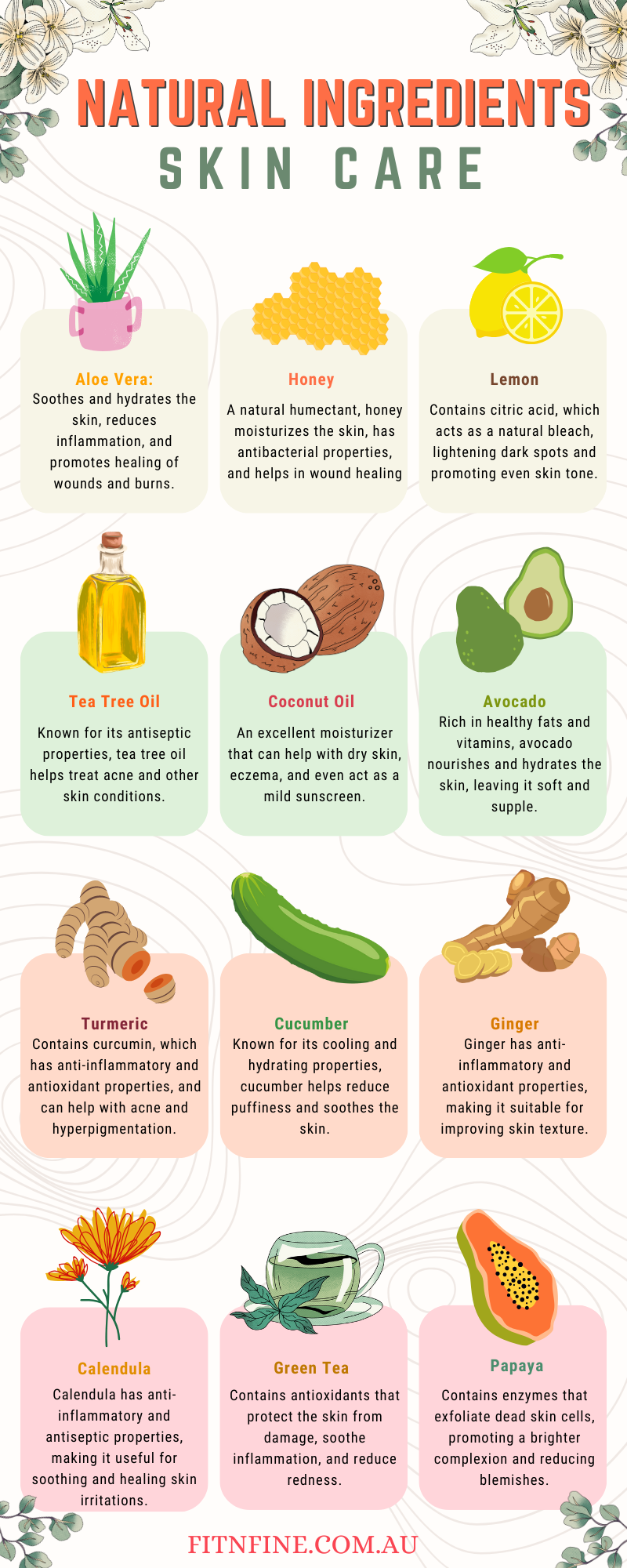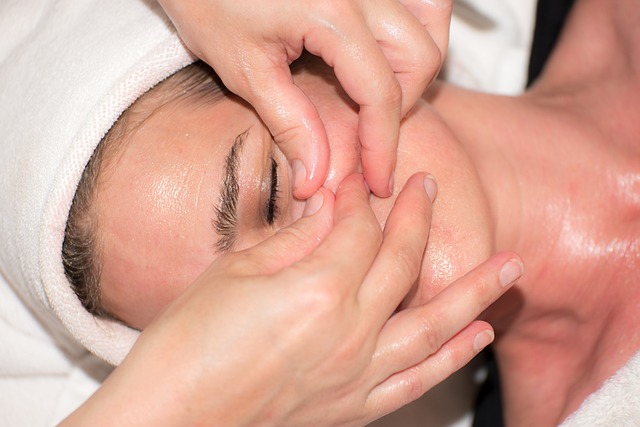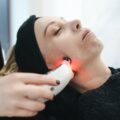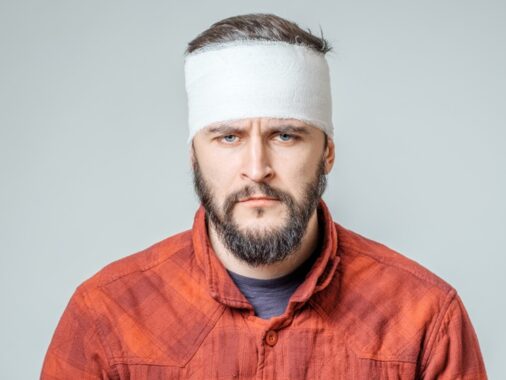Skin, the largest organ of the human body, serves as a protective barrier against the external environment. It’s our first line of defense, shielding us from harmful UV rays, pollutants, and microorganisms. Beyond its protective role, healthy skin is a reflection of our overall well-being and can significantly influence our self-esteem. For these reasons, it’s crucial to prioritise skin treatment as an essential aspect of self-care.
The purpose of this article is to provide you with a comprehensive guide to effective skin treatment. We’ll delve into the fundamentals of understanding your skin, establishing a basic skincare routine, and exploring advanced treatment techniques. Additionally, we’ll address specific skin concerns, discuss the importance of sun protection and anti-aging strategies, and share insights into the relationship between nutrition, lifestyle, and skin health. This guide aims to equip you with the knowledge and tools needed to develop a customised skin treatment plan, tailored to your unique skin type, concerns, and goals. By the end of this article, you’ll be well-prepared to embark on a journey towards healthier, more radiant skin, and enhanced overall well-being.
Understanding Your Skin
Your journey to effective skin treatment begins with a deep understanding of your skin. Skin is not one-size-fits-all; it varies from person to person. There are different skin types, each with its unique characteristics and needs. Recognizing your skin type is the first step in tailoring your treatment for maximum effectiveness.
1. Types of Skin
Normal Skin: This skin type is well-balanced, with even tone and texture. It has minimal issues and generally tolerates a variety of skincare products.
Oily Skin: Oily skin tends to be shiny and is prone to enlarged pores and acne. It produces excess sebum, giving it a greasy appearance.
Dry Skin: Dry skin often feels tight, rough, and may appear flaky. It lacks natural moisture and may be sensitive to certain products.
Combination Skin: Combination skin is a mix of oily and dry areas. For instance, the T-zone (forehead, nose, and chin) might be oily, while the cheeks are dry.
Sensitive Skin: Sensitive skin is easily irritated, leading to redness, itching, or burning. It requires gentle and hypoallergenic products.
2. Importance of Recognising Your Skin Type
Understanding your skin type is crucial because it paves the way for a personalised approach to skin treatment. It allows you to choose products and treatments that are best suited to your skin’s unique needs and challenges.
For instance, if you have oily skin, you can focus on products that help control excess oil and prevent breakouts. On the other hand, if you have dry skin, you’ll want to prioritise moisturising and avoiding products that strip your skin of its natural oils.
Moreover, recognising your skin type helps you avoid potential issues. Using products not suitable for your skin type can exacerbate existing problems or create new ones. By tailoring your treatment to your specific skin type, you’ll optimise your chances of achieving a healthy, radiant complexion.
Now that you understand the importance of identifying your skin type, we can proceed to the next steps in our comprehensive guide to effective skin treatment.
Skin Treatment Techniques for Different Skin Problems:
Treatment for dark armpits:
Armpit pigmentation, or axillary hyperpigmentation, can be caused by various factors, including friction, shaving, deodorant use, and hormonal changes. Consider the following treatments and tips to get brightened armpits :
- Exfoliation: Gently exfoliate your armpits 1-2 times a week to remove dead skin cells. You can use a soft loofah or a mild exfoliating scrub specifically designed for sensitive areas. Be careful not to over-exfoliate, as it can irritate the skin.
- Topical Skin Lighteners: Some over-the-counter skin lightening products containing ingredients like niacinamide, alpha hydroxy acids (AHAs), or kojic acid can help reduce pigmentation. Follow the instructions on the product and use it as directed.
- Prescription Skin Treatments: If over-the-counter products don’t yield satisfactory results, consult a dermatologist. They can prescribe stronger topical treatments, such as hydroquinone or tretinoin, to lighten pigmentation.
- Chemical Peels: Dermatologists can perform chemical peels to remove the top layer of skin and improve pigmentation. This procedure should only be done by a trained professional.
- Microdermabrasion: Microdermabrasion involves the use of a machine to exfoliate and improve the texture of the skin. It can help reduce pigmentation when performed by a dermatologist.
- Laser Therapy: Laser treatments, such as fractional laser or intense pulsed light (IPL), can effectively target and reduce hyperpigmentation in the armpits. Consult with a dermatologist for this option.
- Maintain Good Hygiene: Proper hygiene is essential. Keep your armpits clean and dry to prevent further darkening due to sweat and friction.
- Choose Gentle Hair Removal Methods: Avoid harsh hair removal methods that can irritate the skin. Shaving or using depilatory creams designed for sensitive areas may be more suitable.
- Wear Loose-Fitting Clothing: Opt for loose-fitting clothing to reduce friction in the armpit area. Avoid tight clothing that can worsen pigmentation.
- Sun Protection: Apply sunscreen to your armpits if they are exposed to the sun. UV rays can exacerbate hyperpigmentation.
- Be Patient: It may take time to see noticeable improvements, and results can vary from person to person. Be consistent with your chosen treatment and follow your dermatologist’s advice.
- Avoid Irritating Products: Use deodorants and antiperspirants that are fragrance-free and formulated for sensitive skin. Avoid products with alcohol or harsh chemicals that can cause irritation.
Age Spot Treatment:
Age spots, also known as liver spots or sunspots, can be effectively treated with various laser and light-based treatments. One of the advanced treatments you mentioned is the “4D laser treatment,” which is a fractionated laser approach. However, laser treatments are typically performed by professionals in clinical settings, and I don’t recommend attempting these treatments at home due to the potential risks involved.
Here’s how age spot removal laser like the 4D laser treatment, can be an effective solution for age spot removal, as well as some home remedies to complement professional treatment:
Professional Laser Treatments:
- 4D Laser Treatment: This is a sophisticated 4D laser treatment that combines multiple laser technologies to target different aspects of skin aging, including age spots. It promotes collagen production, improves skin texture, and fades pigmentation. Consult a dermatologist or a licensed practitioner to determine if this treatment is suitable for your skin type and concerns.
- Intense Pulsed Light (IPL): IPL treatments use broad-spectrum light to target and break down the pigmentation in age spots. A series of IPL sessions can help fade age spots gradually.
- Fractional Laser Therapy: Fractional laser treatments, like fractional CO2 or fractional erbium lasers, can improve the texture and appearance of your skin. These lasers create tiny injuries to stimulate collagen production and fade age spots in the process.
- Q-Switched Nd: YAG Laser: This laser targets pigmented lesions, including age spots, to break down the melanin responsible for their color. It’s effective for lightening or removing age spots.
Home Remedies to Complement Treatment:
While professional treatments are the most effective way to treat age spots, you can also use home remedies to support your skin’s health and prevent the formation of new age spots:
- Sunscreen: Use broad-spectrum sunscreen with an SPF of 30 or higher every day to protect your skin from further sun damage.
- Topical Lightening Creams: Over-the-counter or prescription lightening creams with ingredients like hydroquinone, retinoids, kojic acid, or glycolic acid may help fade age spots.
- Vitamin C Serum: Apply a vitamin C serum to your skin, which can help reduce the appearance of age spots and boost overall skin health.
- Exfoliation: Regular exfoliation with a gentle scrub or chemical exfoliant can improve skin texture and reduce the prominence of age spots.
- Hydration: Keeping your skin well-hydrated can help maintain its health and appearance.
Brown spots treatment:
Brown spots, often referred to as age spots, sun spots, or liver spots, are a common skin concern. Here are some treatment options & DIY remedies to remove brown spots on the face.
DIY Remedies:
- Lemon Juice: The citric acid in lemon juice has natural bleaching properties. Apply fresh lemon juice to the brown spots and leave it on for 10-15 minutes before rinsing with water. Use sunscreen afterward, as lemon juice can make your skin more sensitive to UV rays.
- Apple Cider Vinegar: Dilute apple cider vinegar with water and apply it to the brown spots. Leave it on for a few minutes before rinsing. This remedy may help lighten the spots over time.
- Aloe Vera: Aloe vera gel is known for its skin-soothing properties. Apply aloe vera gel to brown spots daily and leave it on.
- Yogurt Mask: Yogurt contains lactic acid, which can help exfoliate the skin. Apply plain yogurt to the spots, leave it on for 20 minutes, and rinse.
- Papaya: The enzymes in papaya can help exfoliate the skin. Mash a ripe papaya and apply it to the brown spots for 20 minutes before rinsing.
Other Treatment Options:
- Topical Skin Lightening Creams: Over-the-counter or prescription creams containing ingredients like hydroquinone, retinoids, kojic acid, or glycolic acid can be effective for gradually fading brown spots.
- Chemical Peels: Dermatologists can perform chemical peels to exfoliate the top layer of skin and improve the appearance of brown spots.
- Laser Therapy: Various laser treatments for brown spots, such as intense pulsed light (IPL) and fractional laser, can target and break down the pigmentation in brown spots.
- Cryotherapy: This procedure involves freesing the brown spots with liquid nitrogen, causing them to peel away over time.
- Microdermabrasion: Microdermabrasion uses a machine to exfoliate the top layer of skin, which can help improve brown spots.
- Cryotherapy: In this procedure, a dermatologist uses liquid nitrogen to freeze the brown spots, causing them to peel away.
- Microdermabrasion: This treatment involves the use of a machine to exfoliate the top layer of skin, which can help improve the appearance of brown spots.
- Prescription Medications: In some cases, dermatologists may prescribe specific medications to target brown spots, especially if other treatments are ineffective.
- Sunscreen: Regardless of the treatment method you choose, always apply sunscreen with an SPF of 30 or higher to prevent further brown spots from developing or darkening.
Laser carbon facial:
A laser carbon facial, also known as the “carbon peel” or “Hollywood peel,” is a non-invasive cosmetic procedure that has gained popularity for its ability to rejuvenate the skin and address various skin concerns. Here’s how it typically works:
Procedure:
- Carbon Application: A layer of medical-grade carbon lotion is applied to the face. This carbon lotion acts as a photo-enhancer and is safe for the skin.
- Laser Energy: A specialised laser, often a Q-switched Nd:YAG laser, is then used to emit high-energy, low-frequency laser pulses that target the carbon particles on the skin’s surface.
- Laser Absorption: The carbon lotion absorbs the laser energy and, in the process, heats up. This, in turn, causes the surrounding skin to heat up as well.
- Photoacoustic Effect: As the carbon particles heat and explode, they create a photoacoustic effect. This effect is like a mini-explosion on the skin’s surface, and it can help remove dead skin cells, oil, and impurities from the pores.
- Stimulating Collagen: The laser energy also stimulates collagen production in the deeper layers of the skin. Collagen is essential for skin elasticity and a youthful appearance.
Benefits of Laser Carbon Facial:
- Skin Rejuvenation: The procedure can help improve skin texture, tone, and overall appearance, making it look fresher and more youthful.
- Acne and Oil Control: The carbon peel can help in the treatment of acne by cleaning out clogged pores and reducing oil production.
- Pigmentation Reduction: It’s effective in reducing the appearance of brown spots and pigmentation irregularities.
- Fine Line and Wrinkle Reduction: The collagen stimulation can lead to a reduction in fine lines and wrinkles.
- No Downtime: Laser carbon facials are non-invasive and typically have minimal to no downtime. You can often resume your normal activities immediately after the procedure.
Cherry angiomas Removal:
Cherry angiomas, also known as senile angiomas or Campbell de Morgan spots, are benign skin growths composed of clusters of small blood vessels near the surface of the skin. They typically appear as small, red or dark red bumps on the skin, resembling a cherry or a mole. These growths are very common, especially in individuals over the age of 30, and can vary in size, from a pinhead to a quarter of an inch in diameter. Cherry angiomas are typically harmless and do not usually cause pain or discomfort.
While cherry angiomas are typically harmless and do not require treatment, some individuals may choose to have them removed for cosmetic reasons or if the growths bleed, become irritated, or cause discomfort. The removal of cherry angiomas can be done through various methods:
- Electrocautery: This procedure involves using an electrical current to cauterise and remove the angioma. The area is numbed with a local anesthetic, and the angioma is then burned off.
- Cryotherapy: In this method, the angioma is frozen using liquid nitrogen. Freezing causes the growth to detach from the skin, and it eventually falls off.
- Laser therapy: A laser can be used to target and destroy the blood vessels in the angioma. This method is less invasive and can be effective in removing the growth with minimal scarring.
- Shave excision: A doctor may choose to shave off the cherry angioma using a scalpel or similar tool. This method is generally reserved for larger angiomas.
Dark spot removal:
Dark spot removal, also known as hyperpigmentation treatment, is a common cosmetic concern. Dark spots on the skin can be caused by various factors, including sun exposure, aging, acne, hormonal changes, and skin injuries. There are several methods to address and remove dark spots, but the specific treatment will depend on the cause and severity of the spots. Here are some common approaches for dark spot removal:
Topical Treatments:
- Skin Lightening Creams: Over-the-counter and prescription creams containing ingredients like hydroquinone, kojic acid, glycolic acid, or retinoids can help lighten dark spots over time.
- Vitamin C Serums: These serums can help reduce the appearance of dark spots and improve skin texture. They are available both over-the-counter and in prescription strength.
Chemical Peels:
- Dermatologists can perform chemical peels using acids like glycolic acid or trichloroacetic acid to exfoliate the top layer of skin and improve the appearance of dark spots. Multiple sessions may be required.
- Microdermabrasion: This procedure involves exfoliating the skin’s top layer with fine crystals or a diamond-tipped instrument. It can help reduce the appearance of dark spots over several sessions.
- Laser Therapy: Various types of laser treatments for dark spots, such as intense pulsed light (IPL) and fractional laser, can target dark spots and stimulate collagen production. Consult a dermatologist to determine the most suitable laser therapy for your skin type and specific condition.
- Cryotherapy: Cryotherapy involves freezing the dark spots with liquid nitrogen. This can be used to remove certain types of dark spots, like seborrheic keratoses.
- Microneedling: Microneedling involves creating micro-injuries in the skin to stimulate collagen production and improve the appearance of dark spots. It can be combined with topical treatments for enhanced results.
- Prescription Medications: In some cases, a dermatologist may prescribe stronger medications to treat specific types of hyperpigmentation, such as melasma. These may include topical steroids or combinations of other ingredients.
- Sun Protection: The most important step in managing and preventing dark spots is to protect your skin from the sun. Regular use of sunscreen with a high SPF is crucial, and protective clothing like hats and sunglasses can also help.
Liver spot removal:
Liver spots, also known as age spots or solar lentigines, are flat, brown or dark spots on the skin that typically develop in areas exposed to the sun, such as the face, hands, arms, and shoulders. They are associated with aging and prolonged sun exposure. Liver spots are not related to the liver and do not have any connection to liver function. These spots are usually harmless but are considered a cosmetic concern for many people. Here’s more information on the causes and treatment of liver spots:
Causes:
- Sun Exposure: The primary cause of liver spots is prolonged and cumulative exposure to ultraviolet (UV) radiation from the sun. UV rays can accelerate the production of melanin, the pigment responsible for skin color, leading to the development of these dark spots.
- Aging: Liver spots are more common in older individuals, as the skin’s ability to repair and regenerate itself diminishes with age.
- Genetics: A person’s genetic makeup can play a role in their susceptibility to developing liver spots.
- Skin Type: People with fair skin are more prone to developing liver spots because they have less melanin to protect their skin from UV damage.
- Other Factors: Some research suggests that hormonal changes and medications can influence the development of liver spots in some individuals.
Treatment:
- Sunscreen: Prevention is key when it comes to liver spots. Regularly applying broad-spectrum sunscreen with a high SPF can help prevent further darkening of existing spots and the development of new ones. Sunscreen should be worn year-round, even on cloudy days.
Topical Treatments:
- Lightening Creams: Over-the-counter or prescription creams containing ingredients like hydroquinone, kojic acid, retinoids, or alpha hydroxy acids can help fade liver spots over time.
- Vitamin C Serums: Topical vitamin C serums can reduce the appearance of age spots and improve skin texture.
- Chemical Peels: Dermatologists can perform chemical peels using acids like glycolic acid or trichloroacetic acid to exfoliate the top layer of skin and improve the appearance of liver spots.
Laser Therapy:
Laser treatments, such as intense pulsed light (IPL) or fractional laser, can target and break down the pigmentation in liver spots. This can be effective, but multiple sessions may be required.
- Cryotherapy: Liquid nitrogen can be used to freeze and remove liver spots. This method is especially effective for small, isolated spots.
- Microdermabrasion: This procedure involves mechanical exfoliation to remove the top layer of skin, which can improve the appearance of liver spots over time.
- Prescription Medications: In some cases, a dermatologist may prescribe stronger medications to treat stubborn liver spots.
Cool sculpting treatment
CoolSculpting, also known as cryolipolysis, is a non-invasive medical procedure designed to reduce and eliminate fat in targeted areas of the body. It is a popular method for body contouring and is typically used for individuals who have localised fat deposits that are resistant to diet and exercise. CoolSculpting is not a weight-loss procedure but rather a way to address specific areas of stubborn fat.
Here’s how CoolSculpting works:
- Cryolipolysis: The CoolSculpting device uses a technique called cryolipolysis, which involves the controlled cooling of fat cells. Fat cells are more sensitive to cold than surrounding tissues, so exposing them to very cold temperatures can lead to their destruction.
- Applicator Placement: During a CoolSculpting session, a trained healthcare professional will place a cooling applicator on the targeted area of your body, such as the abdomen, flanks, thighs, or arms.
- Cooling Process: The applicator delivers controlled cooling to the fat cells, which causes them to freeze and crystallise. This process does not harm the surrounding skin or tissues.
- Apoptosis: Over the following weeks, the frozen fat cells undergo a natural process called apoptosis, in which they gradually die off.
- Elimination by the Body: The body’s lymphatic system then processes and eliminates the dead fat cells over time. This process can take several weeks to months.
CoolSculpting is considered safe and non-surgical, with no anesthesia or downtime required. Patients typically experience minimal discomfort during the procedure, which can take around 35 to 60 minutes per treatment area. It’s important to note that CoolSculpting is not a weight-loss solution but is instead intended for body contouring and the reduction of localised fat pockets.
Laser Hair Removal:
Laser hair removal is a cosmetic procedure that uses concentrated beams of light (laser) to remove unwanted hair. The laser emits a light that is absorbed by the pigment (melanin) in the hair follicles. The energy from the laser is converted into heat, which damages the hair follicles and inhibits future hair growth. This procedure is commonly used to reduce or eliminate hair on various parts of the body, including the face, legs, underarms, bikini lines, and more.
Here are some key points about laser hair removal:
- Procedure: During the procedure, a handheld device is used to deliver the laser pulses to the targeted area. The procedure can be performed by a trained technician or a licensed healthcare professional.
- Multiple Sessions: Laser hair removal is typically not a one-time treatment. Hair grows in cycles, and the laser is most effective during the active growth phase. Multiple sessions are usually required to target hair in different growth stages.
- Effectiveness: Laser hair removal can lead to a significant reduction in hair growth, and in some cases, it may result in permanent hair removal. However, individual results can vary, and periodic maintenance sessions might be needed.
- Suitability: The effectiveness of laser hair removal can be influenced by factors such as skin color, hair color, and hair thickness. People with darker hair and lighter skin tend to respond better to the treatment.
- Safety: Laser hair removal is generally considered safe when performed by trained professionals. Side effects can include temporary redness, swelling, and discomfort in the treated area. Serious complications are rare but may include burns, scarring, or changes in skin pigmentation.
- Preparation: Before undergoing laser hair removal, it’s important to avoid sun exposure and certain skincare treatments that can make the skin more sensitive. Shaving the treatment area a day or two before the session is usually recommended.
- Cost: The cost of laser hair removal can vary depending on factors such as the size of the treatment area, the number of sessions required, and the geographical location of the facility. It’s important to discuss the cost and payment options with the provider.
Under eye circle treatment:
Treating under-eye circles or dark circles under the eyes can be challenging because they can have various causes, including genetics, aging, lack of sleep, allergies, and lifestyle factors. The best treatment for under-eye circles depends on the underlying cause. Here are some approaches to consider:
Skincare Products:
- Topical Creams: Look for eye creams or serums containing ingredients like hyaluronic acid, retinol, peptides, or vitamin C. These ingredients can help improve skin texture and reduce the appearance of dark circles.
- Caffeine-based Products: Caffeine can constrict blood vessels, potentially reducing the appearance of dark circles.
Sun Protection:
- Use sunscreen and wear sunglasses to protect the delicate skin around your eyes from UV damage, which can worsen the appearance of dark circles.
Lifestyle Changes:
- Adequate Sleep: Ensure you are getting enough sleep to reduce fatigue-related dark circles.
- Diet and Hydration: A balanced diet and proper hydration can help improve skin health.
- Allergies: If allergies are contributing to your dark circles, managing and treating your allergies may help.
Home Remedies:
- Cold Compresses: Applying cold compresses, such as chilled cucumber slices or tea bags, can temporarily reduce puffiness and improve the appearance of dark circles.
- Proper Sleep Position: Elevate your head slightly while sleeping to prevent fluid buildup around the eyes.
Medical Procedures:
- Dermal Fillers: Hyaluronic acid fillers can be injected into the under-eye area to reduce the appearance of dark circles and provide volume to hollow areas.
- Chemical Peels: Chemical peels can improve skin texture and pigmentation, potentially reducing the appearance of dark circles.
- Platelet-Rich Plasma (PRP) Therapy: PRP treatment involves injecting a patient’s platelet-rich plasma to stimulate collagen production and improve the appearance of the skin.
- Laser Therapy: Laser for under eye bags can target pigmentation and stimulate collagen production in the under-eye area.
- Blepharoplasty: This surgical procedure can address excess skin and fat in the under-eye area, helping to reduce the appearance of dark circles.
Freckle laser removal:
Freckle laser removal is a cosmetic procedure used to reduce or eliminate freckles from the skin. Freckles are small, flat, tan, brown, or black spots that appear on the skin, often in response to sun exposure. While freckles are usually harmless, some individuals may choose to have them removed for cosmetic reasons. Here’s how freckle laser removal works:
- Consultation: The first step in freckle laser removal is to consult with a dermatologist or a qualified medical professional. They will assess your freckles, discuss your goals, and determine whether laser treatment is suitable for your specific situation.
- Laser Technology: Various types of lasers can be used for freckle removal, including Q-switched lasers (such as Q-switched Nd:YAG or Q-switched ruby lasers) and fractional lasers. These lasers emit high-intensity, focused light that targets the melanin (pigment) in the freckles.
- Procedure: During the procedure, the laser is directed at the freckles. The laser energy is absorbed by the melanin in the freckles, causing the pigment to break down. This process can result in the dark freckles becoming lighter in color or disappearing altogether.
- Multiple Sessions: Freckle laser removal typically requires multiple sessions to achieve the desired results. The exact number of sessions needed will depend on the size, color, and depth of the freckles.
- Recovery: After the procedure, you may experience some redness, swelling, and temporary darkening of the freckles. This is a normal part of the healing process. The freckles may lighten gradually over several weeks to months as the body’s immune system removes the fragmented pigment.
- Sun Protection: It’s essential to protect your skin from sun exposure before and after the procedure. Sunscreen with a high SPF and protective clothing are crucial to prevent the development of new freckles and to maintain the results.
- Possible Risks: While freckle laser removal is generally safe, there are potential risks, including scarring, changes in skin pigmentation, and the recurrence of freckles. These risks can be minimised by choosing an experienced and qualified healthcare professional.
It’s important to note that freckles may return or darken with sun exposure, and new freckles may develop over time. Therefore, ongoing sun protection and skin care are essential to maintain the results of freckle laser removal.
Wrinkles treatment:
“Crow’s feet wrinkles” is a colloquial term used to describe wrinkles that appear at the outer corners of the eyes. These wrinkles typically fan out in a pattern that resembles the feet of a crow, hence the name. Crow’s feet are a common sign of aging, and they are often the result of repeated muscle movements (such as squinting or smiling) combined with the loss of skin elasticity and collagen as we get older.
Wrinkle Treatment Options:
There are various methods to treat crow’s feet and other types of wrinkles. The choice of treatment depends on the severity of the wrinkles, individual preferences, and consultation with a healthcare professional. Here are some common wrinkle treatment options:
Topical Skincare Products:
- Retinoids: Over-the-counter or prescription retinoids, such as tretinoin, can stimulate collagen production and improve skin texture.
- Antioxidants: Products containing antioxidants like vitamin C can help protect the skin from damage and reduce the appearance of wrinkles.
- Moisturisers: Keeping the skin well-hydrated can improve the appearance of fine lines and wrinkles.
Botox (Botulinum Toxin):
Botox injections can temporarily relax the muscles responsible for causing dynamic wrinkles, such as crow’s feet. The treatment is minimally invasive and typically needs to be repeated every few months to maintain results.
Dermal Fillers:
Hyaluronic acid fillers, such as Juvederm and Restylane, can add volume to the skin and fill in wrinkles, including crow’s feet. Results can last several months to a year or more, depending on the product used.
Chemical Peels:
Chemical peels use acids to exfoliate the skin, which can improve skin texture and reduce the appearance of wrinkles.
Laser Therapy:
Various laser treatments, such as fractional laser and ablative laser, can stimulate collagen production and resurface the skin, leading to wrinkle reduction.
Microdermabrasion:
Microdermabrasion involves mechanical exfoliation to improve skin texture and reduce the appearance of fine lines.
Platelet-Rich Plasma (PRP) Therapy:
PRP treatment involves injecting a patient’s platelet-rich plasma to stimulate collagen production and improve the appearance of the skin.
Surgical Procedures:
In severe cases or when non-surgical options are insufficient, surgical procedures like a facelift may be considered to address deep wrinkles and skin laxity.
Sun Protection:
Preventive measures, such as using sunscreen, wearing sunglasses, and avoiding excessive sun exposure, can help slow the development of new wrinkles and protect the skin.
Hyperpigmentation Treatment:
Hyperpigmentation refers to the darkening of patches of skin due to an excess of melanin, the pigment responsible for skin color. It can result from various causes, including sun exposure, hormonal changes, acne, and skin injuries. Treating hyperpigmentation typically requires a combination of topical treatments, medical procedures, and lifestyle changes. Here are some common hyperpigmentation treatment options:
1. Sunscreen:
The most crucial step in managing hyperpigmentation is sun protection. Regularly apply a broad-spectrum sunscreen with a high SPF to prevent further darkening of the affected areas.
2. Topical Treatments:
- Hydroquinone: This skin-lightening agent is available in prescription and over-the-counter forms. It can help fade dark spots over time.
- Retinoids: Topical retinoids, like tretinoin, can stimulate skin cell turnover and improve skin texture, making them effective for some types of hyperpigmentation.
- Vitamin C Serums: These serums can reduce the appearance of dark spots and improve skin texture. Look for products containing L-ascorbic acid, a stable form of vitamin C.
- Kojic Acid: Kojic acid is a naturally derived ingredient that can lighten hyperpigmented areas.
3. Chemical Peels:
Dermatologists can perform chemical peels using acids like glycolic acid or trichloroacetic acid to exfoliate the top layer of skin and improve the appearance of hyperpigmentation. Multiple sessions may be required.
4. Microdermabrasion:
This procedure involves mechanical exfoliation to remove the top layer of skin, which can improve the appearance of hyperpigmentation.
5. Laser Therapy:
Various types of hyperpigmentation laser treatments, such as intense pulsed light (IPL) and fractional laser, can target and break down pigmentation, stimulating collagen production and improving the appearance of hyperpigmentation.
6. Cryotherapy:
Liquid nitrogen can be used to freeze and remove hyperpigmented areas. This method also known as fat freezing is especially effective for small, isolated spots.
7. Micro-needling:
Micro-needling involves creating micro-injuries in the skin to stimulate collagen production and improve the appearance of hyperpigmentation.
8. Prescription Medications:
In some cases, a dermatologist may prescribe stronger medications, such as topical steroids or combinations of other ingredients, to treat specific types of hyperpigmentation, such as melasma.
9. Herbal Remedies:
Some natural ingredients, such as aloe vera, licorice extract, and green tea extract, are believed to have skin-lightening properties. While research on their effectiveness is limited, they may be worth trying for some individuals.
Nutrition and Lifestyle for Skin Health:
Radiant, healthy skin is not solely a result of skincare products and treatments. It’s also deeply influenced by your daily nutrition and lifestyle choices. In this section, we will explore the pivotal role that diet, hydration, sleep, and exercise play in skin health and offer recommendations for maintaining a glowing complexion.
1. Diet:
- Antioxidant-Rich Foods: Incorporate foods rich in antioxidants, such as berries, citrus fruits, leafy greens, and nuts, into your diet. Antioxidants help protect your skin from free radical damage and promote a youthful appearance.
- Omega-3 Fatty Acids: Omega-3 fatty acids found in fatty fish, flaxseeds, and walnuts can help maintain skin’s moisture and reduce inflammation.
- Vitamins and Minerals: Vitamins like A, C, and E, as well as minerals like zinc and selenium, are essential for healthy skin. Include a variety of fruits, vegetables, and whole grains in your meals to ensure you’re getting a broad spectrum of nutrients.
- Hydration: Proper hydration is key for skin health. Drinking an adequate amount of water helps maintain skin’s moisture and elasticity.
2. Sleep:
- Repair and Regeneration: During deep sleep, your body undergoes repair and regeneration, which is vital for skin health. Aim for 7-9 hours of quality sleep each night to support this process.
- Prevent Dark Circles: Insufficient sleep can lead to dark under-eye circles and a dull complexion. Consistent, restorative sleep can help reduce these issues.
3. Exercise:
- Improved Circulation: Regular exercise increases blood flow, which delivers more oxygen and nutrients to your skin. This improved circulation can lead to a healthier, radiant complexion.
- Stress Reduction: Exercise helps reduce stress, which is known to contribute to skin issues. Lower stress levels can result in clearer skin.
- Detoxification: Sweating during exercise helps eliminate toxins from your skin and body. Just be sure to cleanse your skin after a workout to prevent clogged pores.
Lifestyle Tips:
- Sun Protection: Apply sunscreen daily to protect your skin from harmful UV rays. Sun exposure can lead to premature aging and skin damage.
- Gentle Cleansing: Use mild, fragrance-free cleansers to avoid skin irritation. Over-cleansing or using harsh products can strip your skin of natural oils.
- Avoid Smoking and Excess Alcohol: Smoking and excessive alcohol consumption can have detrimental effects on your skin. Quitting smoking and moderating alcohol intake can improve skin health.
- Stress Management: High stress levels can lead to skin issues, including acne and premature aging. Practice stress-reduction techniques like meditation, deep breathing, or yoga.
Take a Look at Some Natural Ingredients and their Skin Benefits:

Age Wise Skincare Tips :
Effective skincare is not a one-size-fits-all approach; it evolves with age and changing skin needs. In this section, we will explore skincare considerations for various age groups, providing age-specific tips and product recommendations to help individuals of all ages achieve healthy, radiant skin.
1. Teenagers and Adolescents (Ages 12-20):
- Cleansing: Teens often have oily skin due to hormonal changes. A gentle, foaming cleanser can help control excess oil without over-drying.
- Acne Management: Products containing salicylic acid or benzoyl peroxide can be effective for managing acne. However, be mindful not to overuse or irritate the skin.
- Sunscreen: Encourage the use of sunscreen to establish lifelong sun protection habits. Oil-free or gel-based sunscreens are suitable for teenagers.
2. Young Adults (Ages 20-30):
- Hydration: Use a light, hydrating moisturiser to maintain skin balance. Products with hyaluronic acid are excellent for retaining moisture.
- Sun Protection: Continue using sunscreen daily. Consider incorporating antioxidants like vitamin C into your routine to combat early signs of aging.
- Anti-Aging Prevention: Start considering anti-aging products with retinoids and peptides to maintain skin elasticity and prevent premature wrinkles.
3. Adults (Ages 30-50):
- Hydration and Moisturization: Use a richer moisturiser to address skin dryness, which often increases with age. Look for products with ceramides and fatty acids.
- Anti-Aging: Incorporate products with retinoids and collagen-boosting ingredients like peptides. Consider products designed to target specific concerns, such as fine lines, dark spots, or loss of elasticity.
- Sunscreen and Sun Protection: Continue daily sunscreen use and consider broad-spectrum sunscreens with a higher SPF to protect against UV damage.
4. Mature Adults (Ages 50+):
- Hydration and Nourishment: Look for products that provide deep hydration and nourishment, as mature skin can become drier. Ingredients like niacinamide and glycerin are beneficial.
- Retinoids and Growth Factors: Consider advanced skincare products with retinoids, growth factors, and peptides to address more advanced signs of aging.
- Sun Protection: Maintain diligent sun protection. Skin is more susceptible to UV damage as it ages, which can exacerbate existing skin issues.
General Tips for All Ages:
- Regular Cleansing: Consistent cleansing is essential at every age to remove impurities, makeup, and pollutants.
- Avoid Harsh Products: Steer clear of harsh cleansers or exfoliants, as these can strip the skin and exacerbate issues.
- Consult a Dermatologist: If you have specific skin concerns or conditions, consulting a dermatologist can provide tailored advice and treatment options.
- Product Patch Testing: Before using new skincare products, perform a patch test to check for any adverse reactions.






